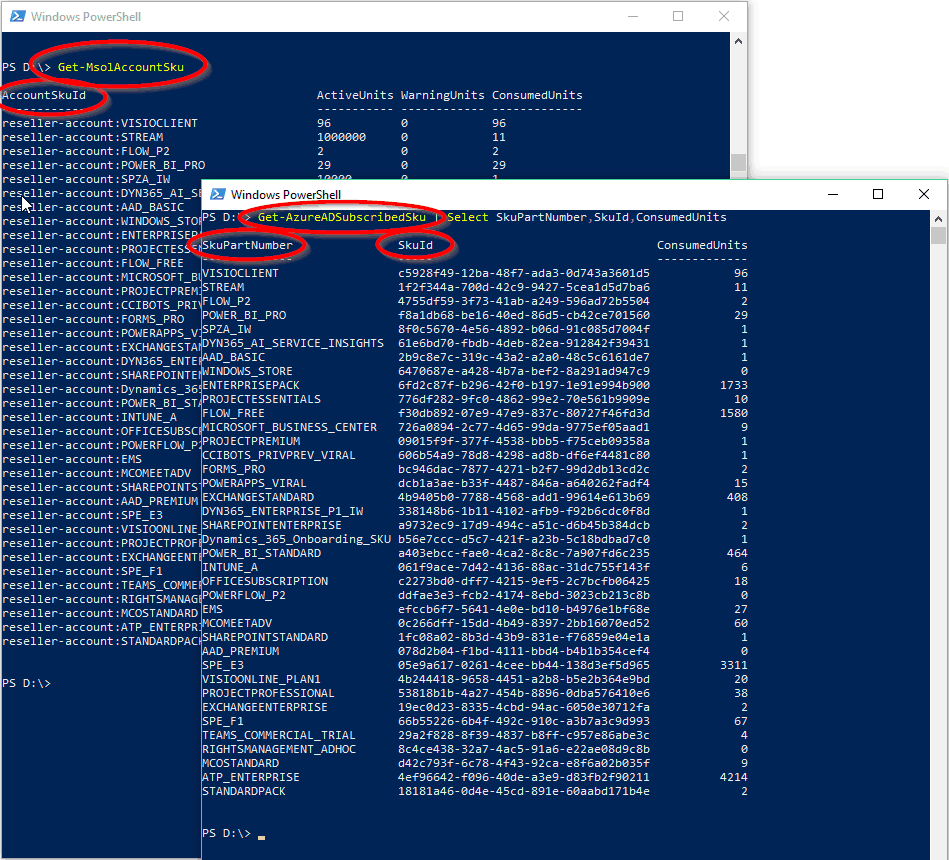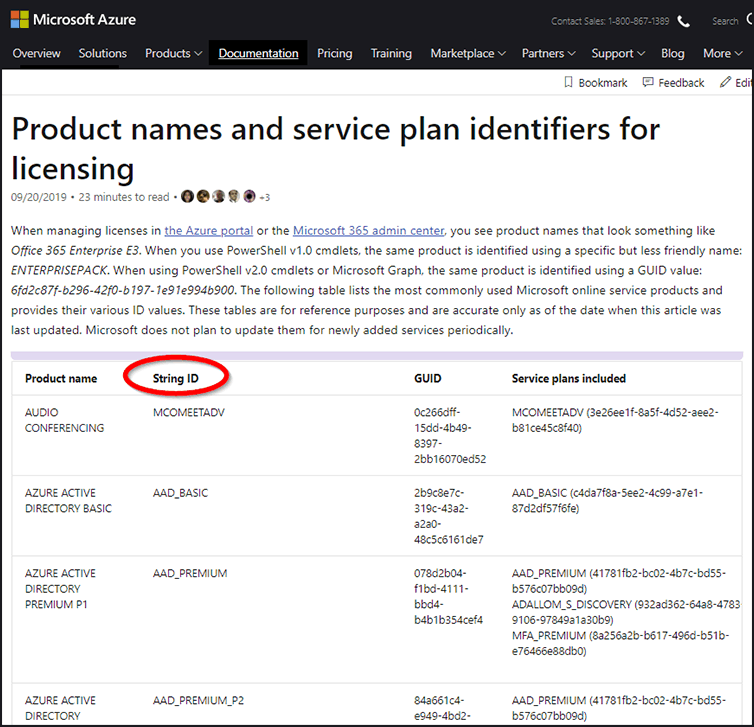In the world of Microsoft O365 licenses, you hear very often the term “SKU“. There are O365 cloud service products that are described as “SKU“, you get license information with PowerShell commands with “SKU-something” in the name, they have “SKU IDs” or “Account SKU IDs“…

…what appears here as “SKU Partnumber” appears elsewhere as “Product ID String” …

… quite confusing. What exactly means SKU here? Ok, let’s start with the definition from a dictionary:
A stock keeping unit (SKU) is an identifier such as a number or a (bar-)code for a single item in a retail company’s range. The SKU enables a product to be clearly identified and is important for a retailer’s inventory management.
SKU in O365 / Azure AD
Hmm, and what does this mean in terms of O365 / Azure AD licensing? Easy:
- Microsoft sells SaaS cloud services as product subscriptions, they have names like
- Microsoft 365
- Office 365
- Exchange Online
- Enterprise Mobility + Security
- Intune
- Dynamics 365
- Most of these products exist in different specific license levels, these are the ‘plans‘. They differ in pricing and features included. Examples of different plans are:
- Microsoft 365 E3
- Microsoft 365 E5
- O365 E3
- O365 F1
- EM+S E3
- EM+S E5
- Azure AD Premium P1
- Azure AD Premium P2
- As you might have guessed: Higher plan levels = more features = higher prices…
- And: These plans are the specific SKUs! In this context, ‘SKU’ stands for the exact definition for the license level and feature bundle of a certain cloud product.
Each plan has an SKU ID (which is the technical string ID, used in PowerShell cmdlets, like ‘ENTERPRISE PACK’). Mostly you will purchase an SKU license for each user who needs to consume the regarding service. These SKUs are the items in your subscription shopping cart that you will be charged… - By the way, most SKUs are combinations of different features included in there: These are the ‘Service Plans‘. Service Plans are the building blocks of the SKU products. In the admin portals, you might see them as ‘apps’ under the licenses.
Not enough confused by all the license stuff? 🙂 Then have a look at my blog post about resolving the technical SKU IDs into readable product names.
One thought on “What exactly does SKU stand for again?”
Great article – nice and east to grasp.